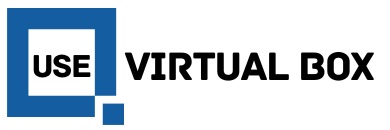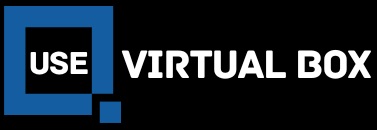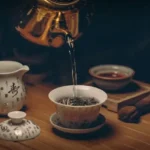Have you ever wondered about the cost of caja and what it truly represents? This intriguing concept goes beyond mere numbers; it embodies a rich tapestry of culture, tradition, and history. Whether you’re a novice looking to understand its significance or someone seeking ways to experience caja without breaking the bank, this blog post is designed for you. Join us as we dive into the world of caja—exploring its historical roots, cultural evolution, and practical insights on how to navigate costs effectively. Your journey into understanding box-like treasures begins here!
What is Caja and its significance?
Caja is more than just a physical box; it carries profound cultural significance across various societies. Often used to store valuables or important documents, caja symbolizes security and heritage.
In many cultures, the concept of caja transcends its material form. It embodies trust and familial bonds, serving as a repository for memories passed down through generations.
The way people engage with caja can reveal insights into their values and traditions. For some, it represents simplicity and practicality; for others, it’s an artful expression of creativity.
Understanding what caja means in different contexts opens up avenues for exploration. Each box tells a story—a narrative that reflects community identity and personal history intertwined within its confines. As we delve deeper into this topic, you’ll discover how the cost of caja becomes intertwined with these rich meanings.
Exploring the History of Caja
Caja has a rich and diverse history that spans centuries. Originating in various regions, it served not only as a means of storage but also as a symbol of community and tradition.
In ancient times, caja was often handcrafted from locally sourced materials. Families would pass down their techniques through generations, embedding cultural significance into each piece.
As trade routes expanded, the design and functionality of caja evolved. Different cultures adopted unique styles that reflected their values and way of life. From decorative elements to practical uses, these variations reveal much about societal norms.
The role of caja shifted with industrialization, introducing mass production methods. This change made them more accessible but sometimes diluted their artistic roots.
Today’s modern interpretations blend old-world charm with contemporary aesthetics, keeping the spirit alive while adapting to current needs. The journey of caja illustrates how traditions can evolve yet remain meaningful over time.
The Evolution of Caja in Different Cultures
Caja has woven itself into the fabric of various cultures, each adding its own flavor. In Latin America, it often symbolizes community and collaboration. People gather to share resources in a supportive environment.
In contrast, African traditions view Caja as an essential tool for financial empowerment. Here, groups come together to save collectively and invest in their futures.
Asian cultures have also embraced Caja-like systems with unique adaptations. From rotating savings clubs to informal lending circles, these practices highlight strong communal ties.
Each interpretation emphasizes connection and mutual assistance while reflecting local customs and values. As societies evolve, so does the role of Caja—shaping not only economies but also relationships within communities across the globe.
How has the cost of Caja changed over time?
The cost of caja has seen significant fluctuations throughout history. Initially, it was a simple affair tied to local economies and resources. People valued it based on their immediate needs and availability.
As societies evolved, so did the demand for caja. Economic booms often correlated with increased costs as more people sought this essential item. Conversely, during downturns or crises, prices tended to drop as supply outpaced demand.
Globalization introduced new factors into the equation. The ability to source materials from various countries created competition that affected pricing structures dramatically.
Cultural perceptions also influenced costs. In some regions, caja became a status symbol, elevating its price beyond mere functionality. As trends shifted over the decades, consumer willingness to pay shaped its market value in unique ways.
Tracking these changes reveals much about societal values and economic conditions through time.
Factors that Affect the Cost of Caja
The cost of caja can fluctuate based on various factors. One significant element is location. Different regions may have varying availability and demand, impacting prices.
Seasonality also plays a crucial role. Certain times of the year might see higher costs due to limited supply or increased popularity for specific events.
Quality is another determinant. Higher-quality materials or artisanal techniques generally command a premium price compared to mass-produced options.
Market trends influence consumer behavior as well. Changes in preferences can drive up costs if an item becomes trendy or sought after by collectors.
Economic conditions cannot be overlooked. Inflation rates and currency fluctuations often affect overall pricing, making it essential to stay informed about broader economic indicators when considering the cost of caja.
Ways to Save Money on Caja Expenses
Savings can be achieved with some smart strategies. First, consider planning your Caja experiences during off-peak times. Prices often drop when demand is low.
Next, look for group discounts or family packages. Many venues offer lower rates for larger parties, making it budget-friendly.
Another option is to explore local community events that feature Caja without the hefty price tag. These gatherings often celebrate cultural aspects and provide authentic experiences at minimal cost.
Don’t forget about loyalty programs or memberships. Some organizations reward frequent visitors with coupons or reduced fees.
Keep an eye on seasonal promotions. Businesses may run special deals around holidays or festivals that make enjoying Caja more affordable than ever.
Creative Ideas for Experiencing Caja on a Budget
Experiencing Caja doesn’t have to break the bank. One fun idea is to host a themed potluck with friends. Each person can contribute a dish inspired by traditional Caja recipes, making it both an enjoyable and inexpensive way to share flavors.
Another option is to explore local markets or farmers’ fairs. Often, you’ll find fresh ingredients at lower prices that allow you to recreate authentic dishes right at home.
Consider organizing an outdoor picnic featuring Caja-inspired snacks. Pack simple foods like sandwiches or salads using seasonal produce for a budget-friendly treat while enjoying nature.
Check out free community events celebrating cultural cuisine. These gatherings often showcase cooking demos and tastings—perfect opportunities for culinary exploration without spending much money!
The Impact of Inflation on the Cost of Caja
Inflation plays a significant role in determining the cost of Caja. As prices rise across various sectors, the expenses associated with this traditional practice follow suit.
Many consumers notice that what once seemed affordable now requires more careful budgeting. Ingredients, materials, and even labor costs have increased due to economic shifts.
The global market influences local pricing as well. Imports become pricier when currency values fluctuate. This can directly impact how people experience Caja in different regions.
Communities may adapt by finding alternative ingredients or simplifying their approaches to make it more economical. Yet, some enthusiasts remain committed to preserving authentic experiences despite rising costs.
This balancing act between tradition and modern financial realities shapes how individuals engage with Caja today. Exploring these dynamics reveals a deeper understanding of its value beyond mere monetary terms.
Comparing the Cost
When it comes to the cost of caja, comparisons can be quite revealing. Different regions and cultures have their own unique approaches, which often impacts pricing. In some areas, traditional methods may lead to lower costs due to local sourcing and community involvement. Meanwhile, more commercialized markets might see inflated prices driven by demand.
To make an informed decision, it’s essential to look at various factors that contribute to these disparities. Analyze what influences pricing in your locale versus other regions. Consider not just standard rates but also hidden fees associated with storage or services tied to caja.
Taking a closer look at these differences allows you to appreciate the value of your investment while helping you navigate potential savings opportunities along the way. Whether you’re passionate about traditional practices or drawn toward modern adaptations, understanding how costs compare will enhance your experience with caja significantly.








